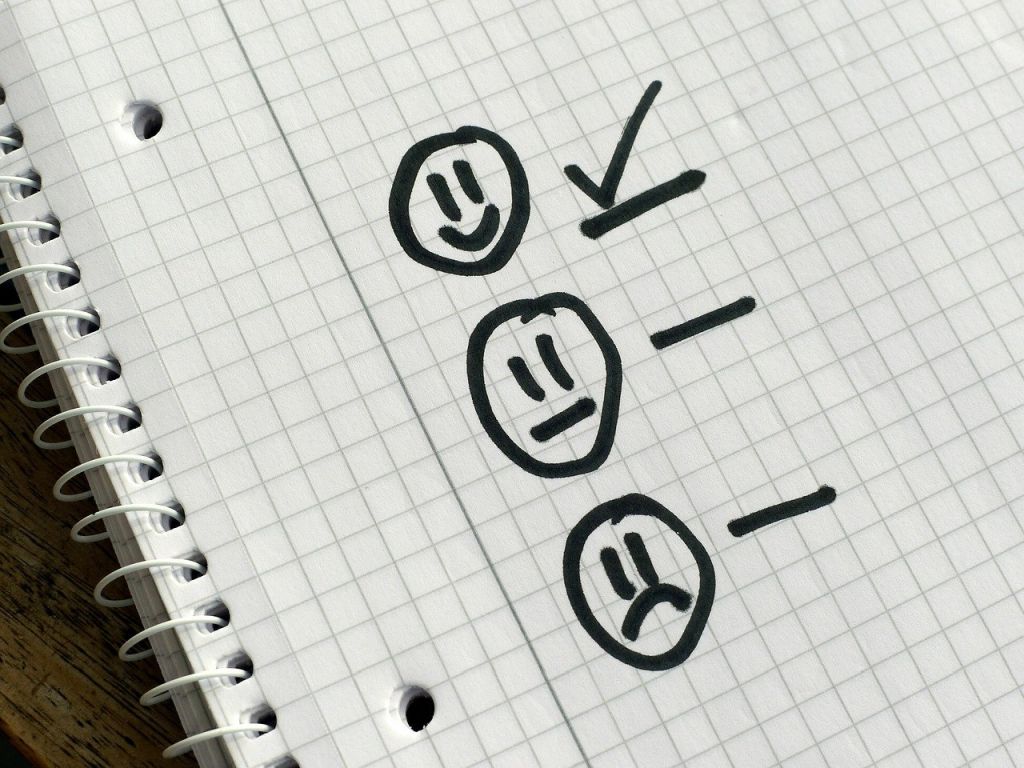The year 2020 marked the 100th anniversary of modern marketing research. The methods developed in the 1920s lay the foundations for modern online or telephone questionnaires. Quantitative and qualitative research allows for in-depth knowledge of the market even today.
The use of quantitative and qualitative research in marketing
Quantitative and qualitative research in some forms has been known as long as trade continues. As the name suggests, the former allow you to collect numerical data and answer the questions: how much, how long, how often. Qualitative research, in turn, refers to deeper motivations of customers and in short answer the question: why?
Market and opinion research are the basis of all marketing activities, allowing you to create a strategy and assess the potential of a business idea. Quantitative and qualitative research is useful at every stage of the business. How are they different from each other?

In the 1920s, Daniel Starch developed the so-called starch test. It made it possible to evaluate the effectiveness of press advertisements. Similar quantitative and qualitative research is carried out to this day to check how many customers the advertising message reached and how they evaluate it. This helps you see if an ad or communication strategy it works. Nowadays, such surveys and questionnaires are also used to research:
- market,
- opinions,
- preferences,
- current needs,
- motivation,
- behavior and others.
Do you know what effects your PR and marketing activities bring?
We will show you how to check it and reach your customers even more effectively.
Quantitative and qualitative research can be conducted not only in relation to clients to determine who they are target groupbut also the market or social awareness of a given problem or brand. Ideally, the marketer has control over the entire research process. Then he can consciously set goals and choose instruments, appropriate methodology or a group of respondents. It is important to remember that errors in the methodology may affect the results. The lack of impartiality can also falsify the results. Errors may also occur at the stage of analyzing the results and drawing conclusions. When you plan specific expenses based on the results, such mistakes can be severe. It is worth mentioning here the difference between controlled studies on a specific sample and more loose conclusions from surveys or online, open questionnaires. The more controlled the research environment, the more reliable the results.
Quantitative and qualitative research - differences
You can run only one of them or create surveys that include both quantitative and qualitative research. The differences between the two types determine the effects that can be obtained. The specificity of qualitative research are open questions. Quantitative research tends to focus on closed questions. But that's not the only difference between quantitative and qualitative research. Differences also apply to the size of the study group.
In quantitative research, the minimum sample size has to be larger to eliminate the risk of errors or randomness. This is where more specific statistical knowledge comes into play, because you need to take into account the estimation error, confidence level or population size. In qualitative research, the sample size may be smaller.

Quantitative and qualitative research - which ones to choose?
Quantitative and qualitative research are often combined. The former are used to learn the facts. Qualitative research can indicate the causes of phenomena and help in the interpretation of the results of quantitative research. For example, when a resident of a given city spends a certain amount on average for dinner, qualitative research shows why this is so. Often, after analyzing the results of both types of research, it arises rebranding or is being implemented PR campaign.
It is already known what percentage of people associate a brand, logo or phenomenon, and from qualitative research it is also known what opinion they have about it. Statistical quantitative data is useful for creating a business plan and strategy. With their help you will find out how big the market and the demand are. Qualitative data is more important in the creation of ads, products or offers. It is worth researching both current, potential and former customers. The results of the research on each of these groups allow for drawing separate conclusions. Also, people who do not use the company's services yet, as well as those who have opted out, may have valuable comments that will help improve the offer.
How to conduct quantitative and qualitative research?
There are more tools for conducting quantitative and qualitative research today than ever before. In the early days of marketing, Daniel Starch sent interviewers to go from house to house. In turn, in 2021, the National Census mainly uses data from the Internet census (CAWI). Telephone (CATI) and direct (CAPI) interviews will only supplement it for the first time, and in the next census in 10 years, the role of the enumerator will probably be even more limited. This symbolically shows the shift in trends when it comes to quantitative and qualitative research.
Reaching thousands of respondents online is relatively easy and allows you to collect data quickly. Direct censuses have their own characteristics and should not be completely ignored. Direct conversation is more reliable data. It allows for honest, in-depth speech. However, any quantitative research is easiest to collect online.
Modern tools such as Google Analytics, Google Trends and website and social media statistics are revolutionary. They make it possible to collect data without user interaction. And not only the quantitative ones (number of visits, number of clicks), but also qualitative ones, because thanks to them you will learn both the questions asked by customers and the answers they give on forums or on social media.

According to analysts, the 21st century is the Big Data era. The data is to be as valuable today as the raw materials used to be. This is just one of the arguments that it is worth investing in measurements and testing various indicators that prove the legitimacy and effectiveness of the actions taken.
Do you need effective tools to measure your PR and marketing activities? Tell us about it - we will propose only the best.
Worth knowing:
How are quantitative and qualitative research used in marketing?
Quantitative research allows you to collect all kinds of numerical data, while qualitative research allows you to analyze customer motivation. This research is the basis for all marketing activities and allows for the creation of further strategies.
What are the directions of quantitative and qualitative research?
Thanks to this research, we can precisely define the target group of future customers, but also effectively research the market. The correctness of research helps to effectively set goals and properly select instruments to achieve them.
What is the difference between quantitative and qualitative research?
Qualitative research is conducted through surveys constructed from open-ended questions, while quantitative research consists of closed questions. Quantitative research covers a larger group of respondents because the risk of making mistakes must be eliminated.

